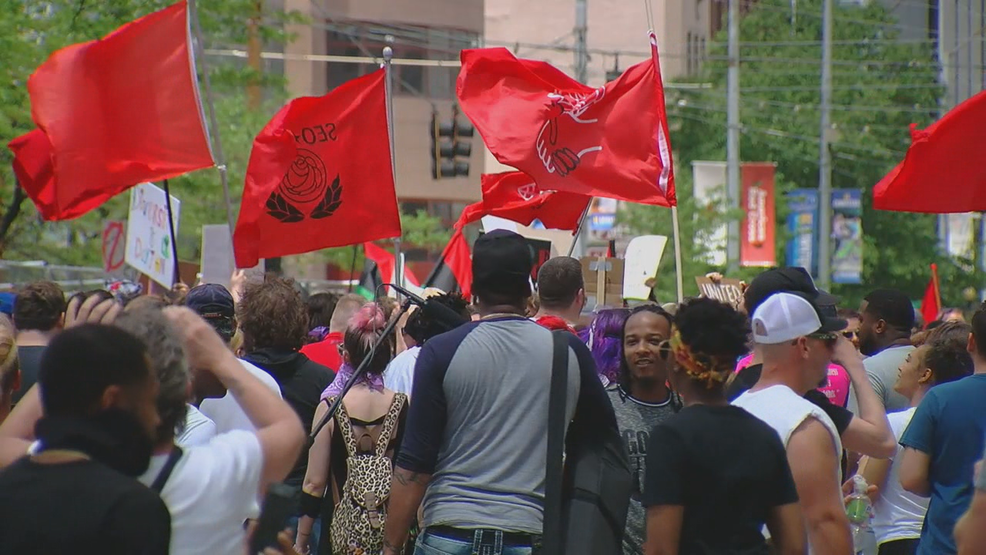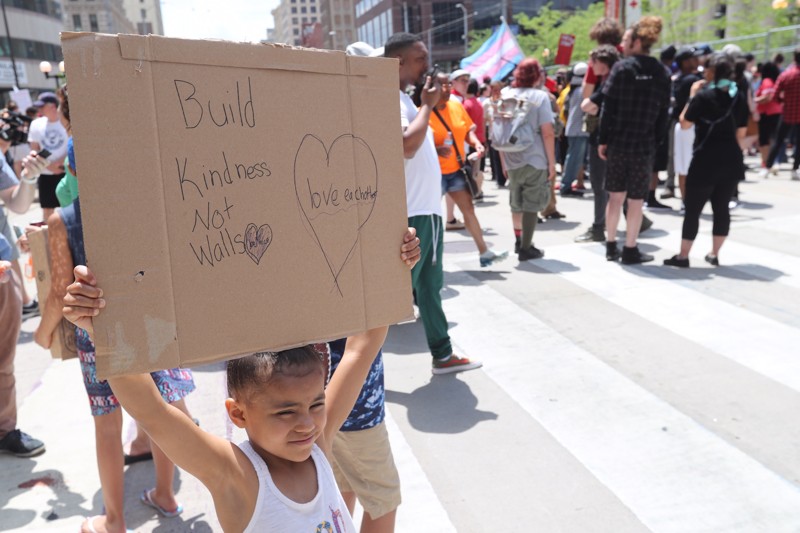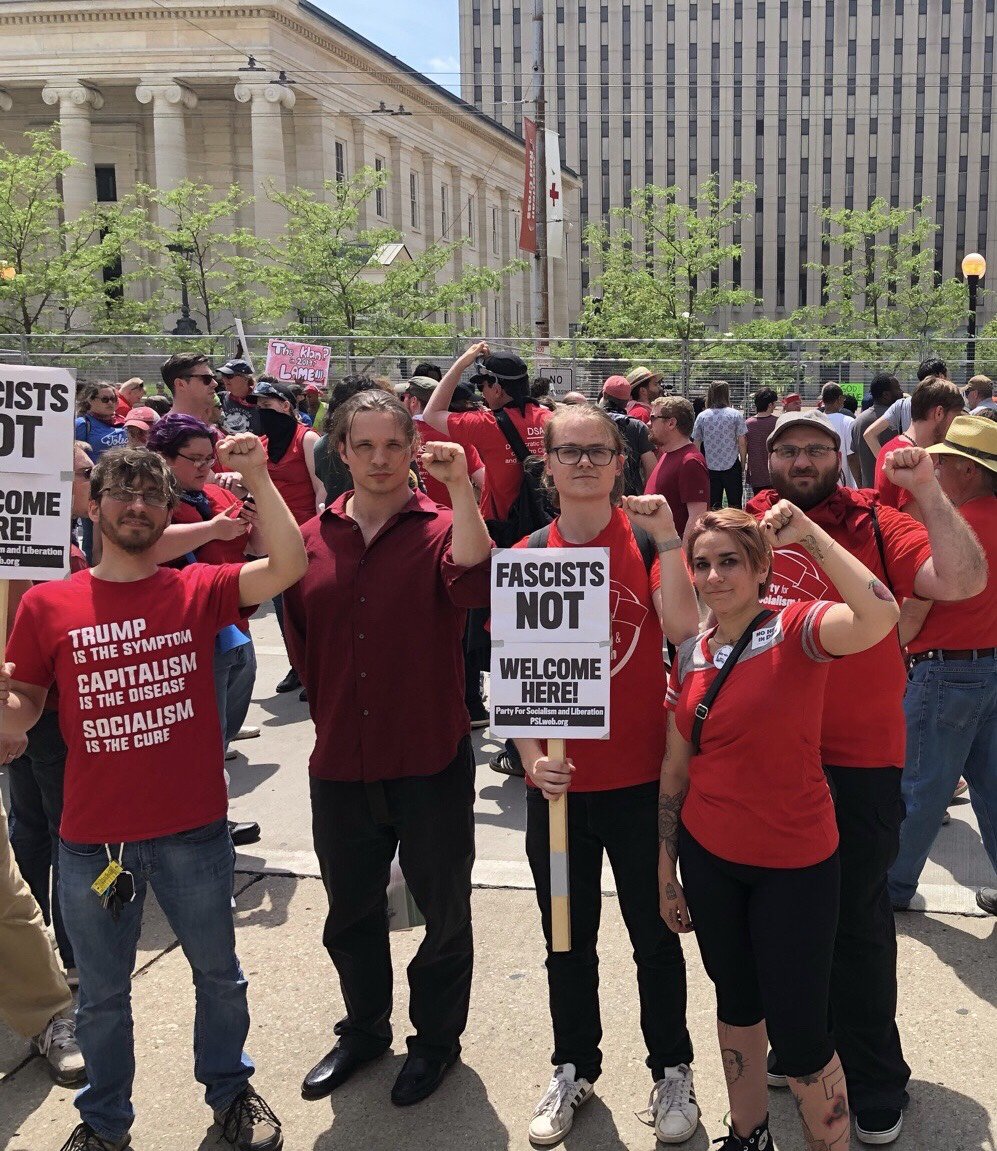It would be an understatement to claim that Dayton experienced a rough Memorial Day weekend. The weekend’s storms that ravaged the area served as an exclamation point on a trying time for the entire community.
Though, through all of that communal adversity, Dayton’s resiliency has shone brighter than it has in most of the mid-sized midwest metropolitan’s long, adversity-filled history.
To speak of the events of Saturday, May 25 and the lead-up and aftermath would be, unavoidably, to speak from one side of the fence. In fact, that is what myself and my colleagues did on that day.

We stared, across a courthouse courtyard, past Orwellian features; armored and armed police officers carrying truncheons and assault rifles, beyond towering, double-layered fencing, while observers from above gazed down, all guarding a total of nine men in half-balaclavas, decorated in skulls, carrying antiquated flags that reach back to an antebellum south and the century and a half of violence thereafter.
To speak of this past Saturday’s event, wherein members of the Ku Klux Klan stood in Dayton’s town square, is to speak of something that is both a warning for a troubling possible future and a look back at a haunted past we thought we had buried.
For some, the rally was merely about opposing views. A group of individuals exercising their First Amendment right, and nothing more. But for others, it was seen as nothing more than an attempt to spread hatred.

That being said, according to a Supreme Court ruling on Matal v. Tam, a case that reaffirmed the right to use “hateful” or “disparaging” speech based on race, ethnicity, gender, religion, age, disability or any other similar ground as hateful allows for hate speech to be covered under free speech.
The law itself was a reaction to an Asian-American musician who wished to trademark his band name, which was a racial slur, meant to denigrate people of Asian ancestry. In other words, this is an issue that has come up on the national level before.
The city of Dayton tried multiple times to block the KKK members from coming to their city but ultimately were forced to allow the Klan members to come due to First Amendment Rights.
The rally itself ended up costing the city a total of $650,000 and was attended by nine members of Indiana’s KKK chapter and approximately 600 counter-protesters. Of the rally the mayor, Nan Whaley, said:
“I’m proud of the city. I think it is frustrating how expensive it is today to keep people safe.”
She commented further, in an article for Time:
“The number of assault rifles was troubling to me. This place we live in now [is] where we have to really prepare for really bad scenarios, and that’s really expensive.”

Though the expenses were high, it is understandable the ways in which the community protected itself and its residents. In fact, in that same Time article, a downtown bar owner, Gus Stathes, commented saying:
“I’d much rather spend money than human lives. It could have gotten real ugly real fast.”
A fact that is prudent, considering the events that took place during the “Unite the Right” rally in Charlottesville, Virginia. Wherein Alex Fields, a 20-year old who had espoused neo-Nazi and White Supremacist views drove a car through a crowd, killing Heather Heyer and injuring eight others.
Some have even suggested that the city send members of the Klan a bill, both in an attempt to deter them from coming back and to recoup some of the costs lost on the event.
According to a Cincinatti.com article, State Senator Cecil Thomas, a former Cincinnati councilman and executive director of the Cincinnati Human Relations Commission was quoted as handing a similar problem, in which Klan members placed a cross on Fountain Square around Christmas.
“The city sent the Klan a bill for $17,000 for all of the security costs. We told them the only way they were allowed to come back is they had to pay that bill,” Thomas said. “They haven’t come back since.”
The weeks leading up to the rally, local businesses posted signs in protest to the KKK members holding their rally and The Neon, a downtown art-house theater played the 2016 film “Loving.” The film about Richard and Mildred Loving, plaintiffs in the 1967 court case Loving v. Virginia, a law that struck down states banning interracial marriage. The film’s showing was a form of silent protest.

All in all, the community banded together, and though the weekend and all of its turmoil tossed the city for a rough, long Memorial Weekend, in the end, the city might’ve come out of it stronger, and more united before.
It’s worth noting, just a week later, some 5,000 people showed up for Dayton’s Pride Parade, in the same place that the klan members stood just one week before, a community embracing each other in love, leaving behind the hatred from a week prior.
Richard Foltz
Managing Editor
Quinton Bradley
Intern


